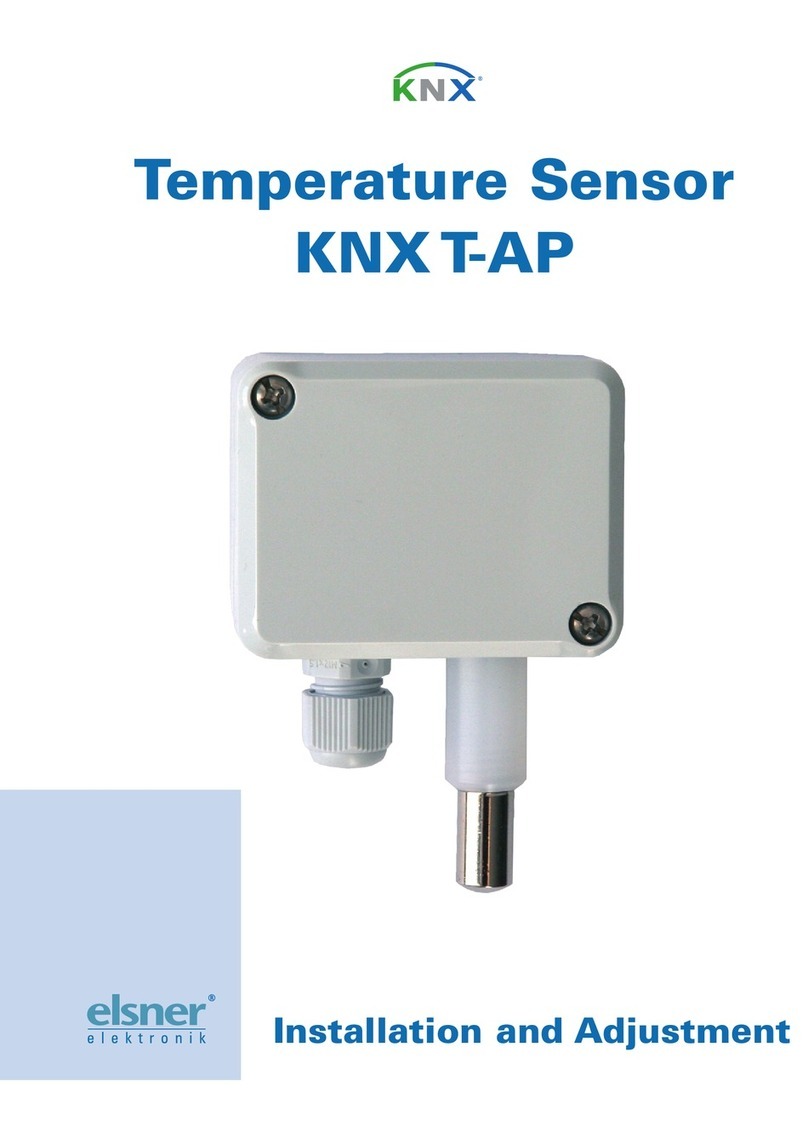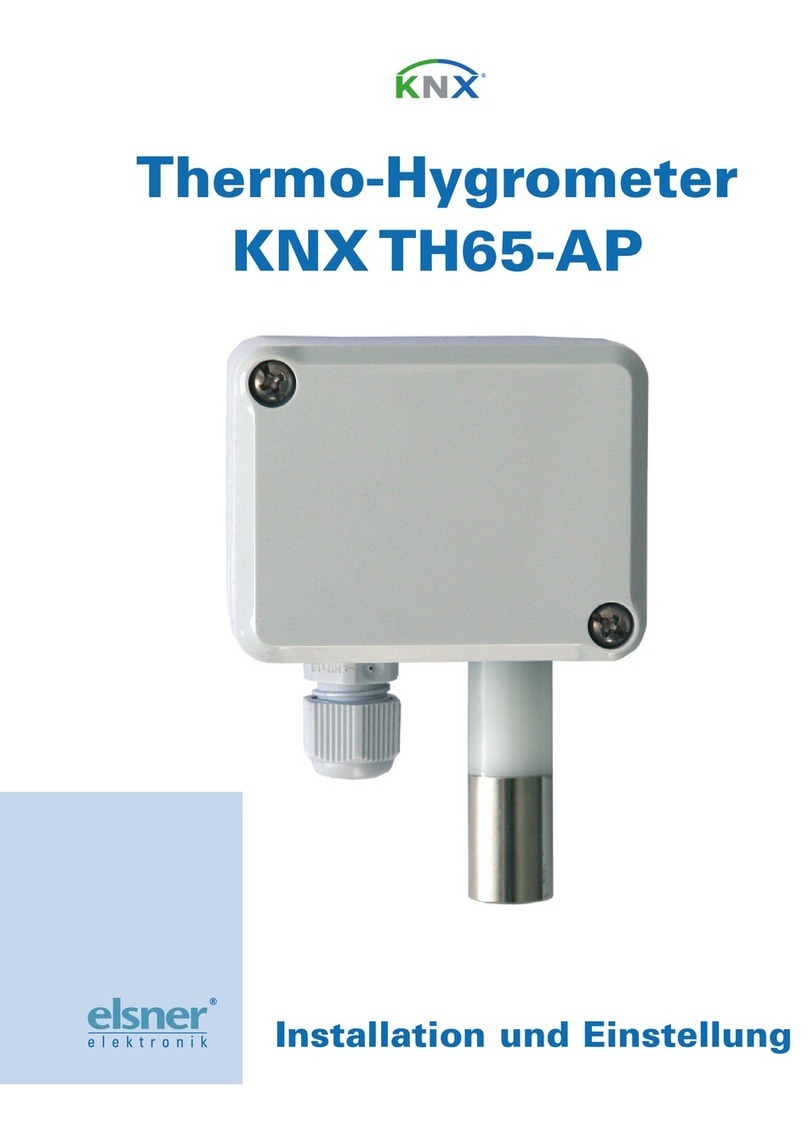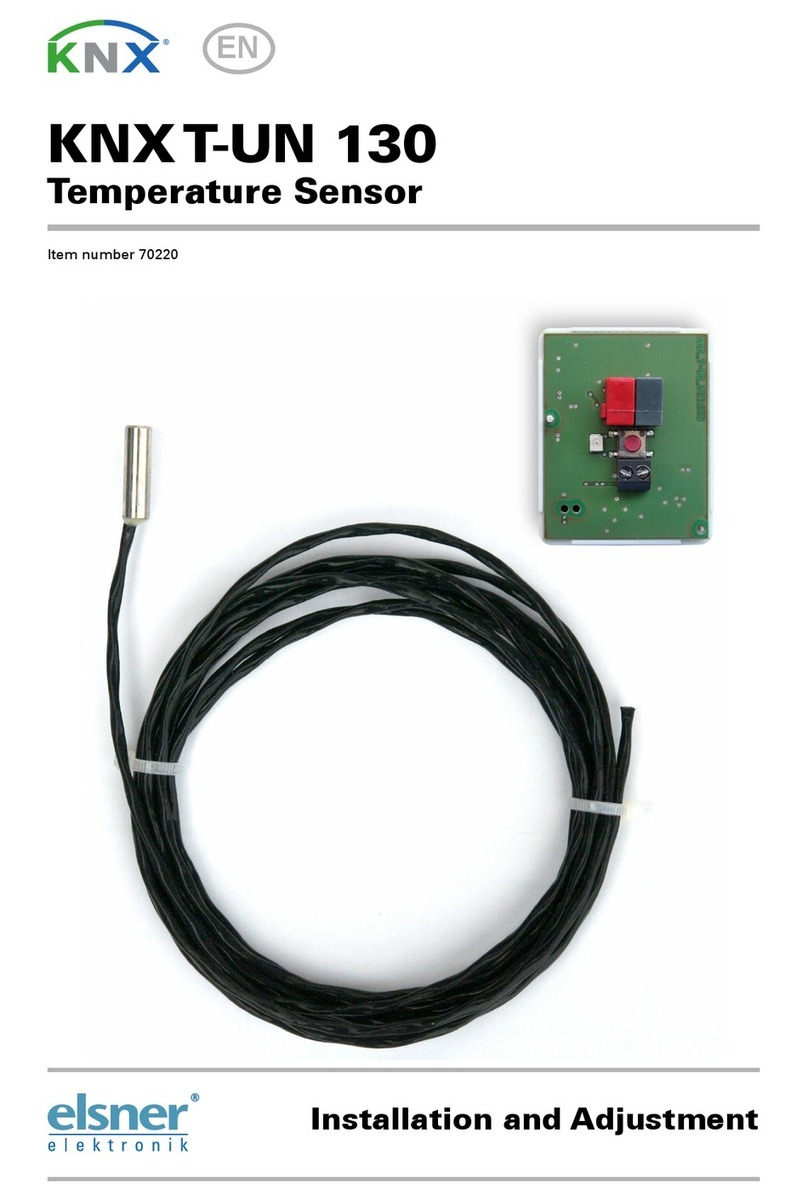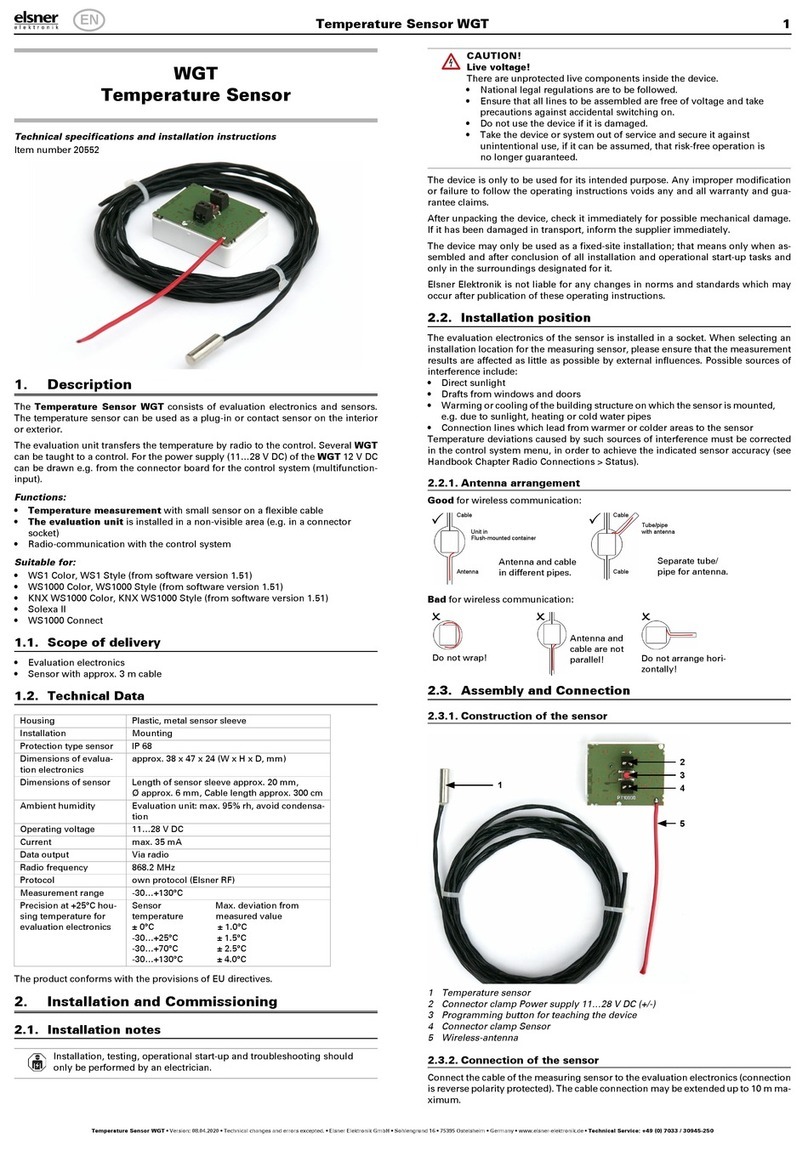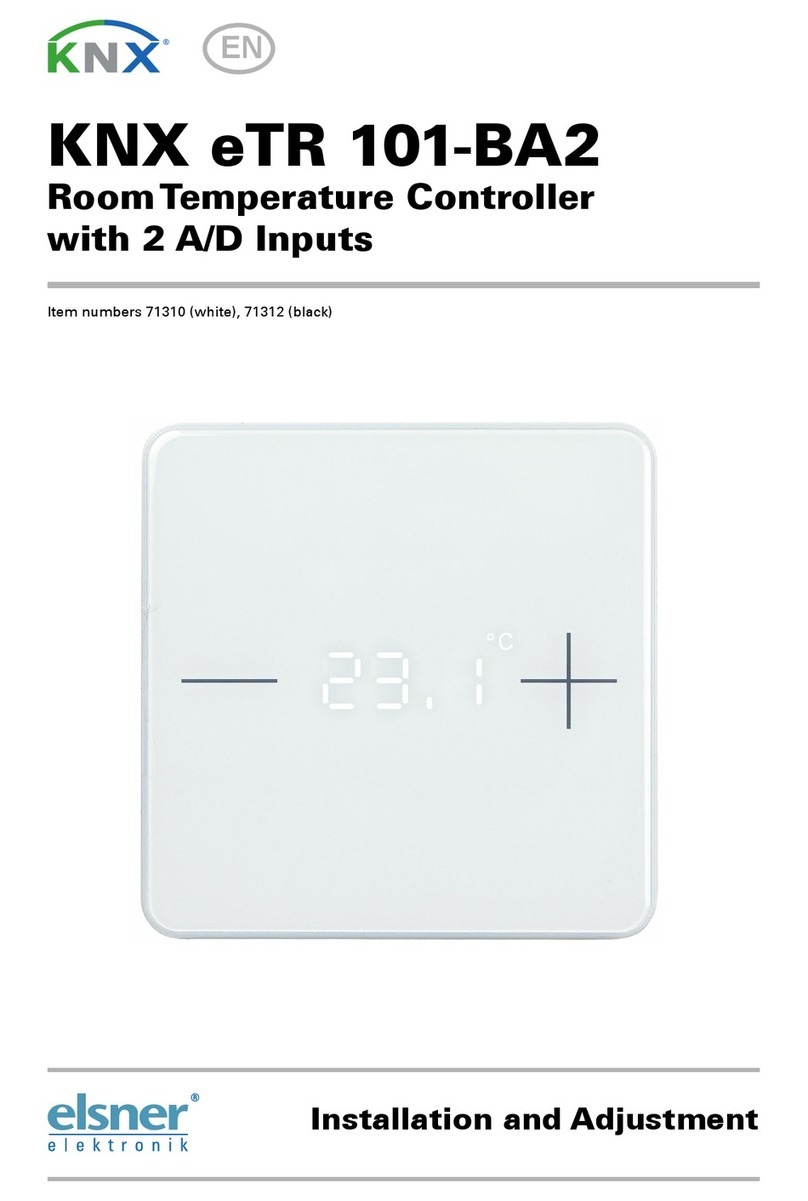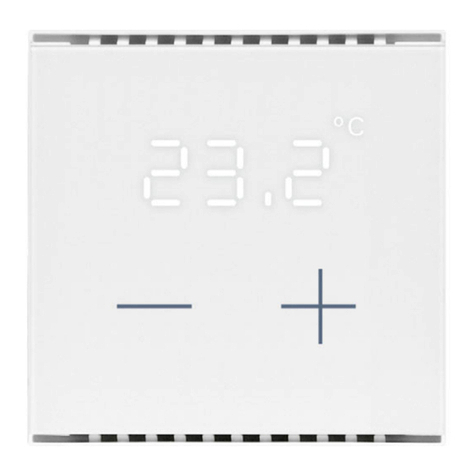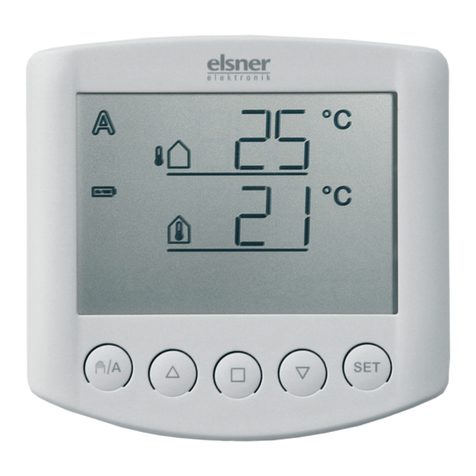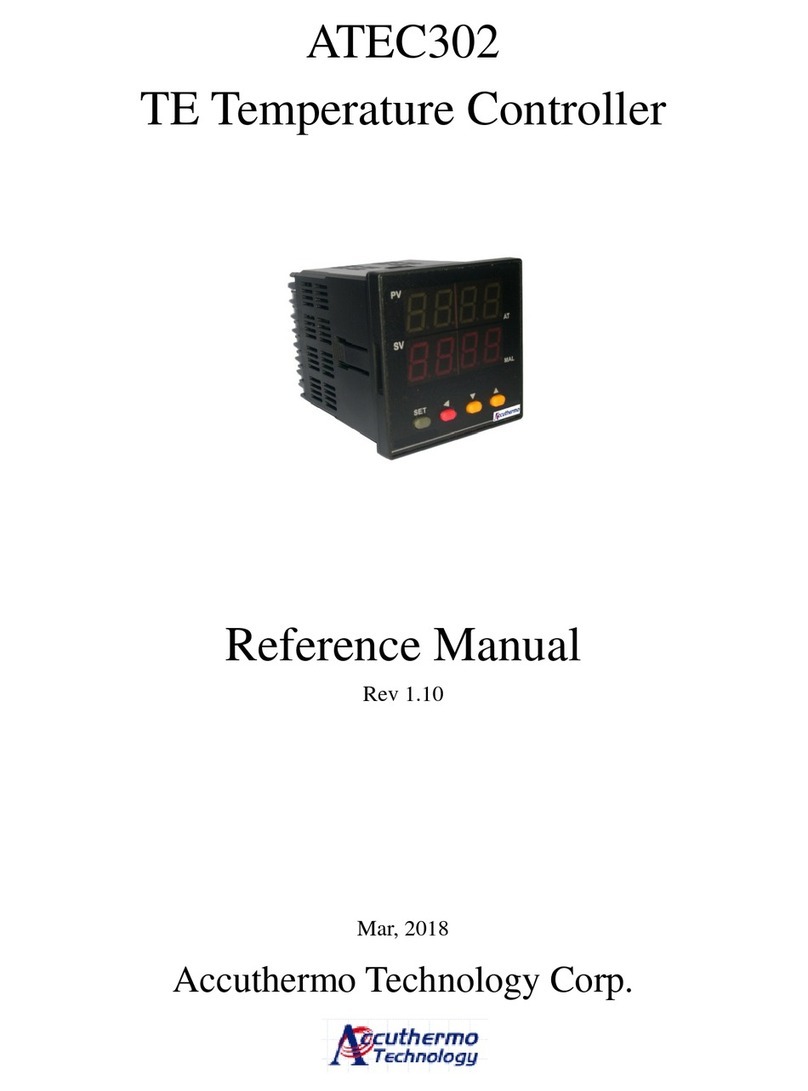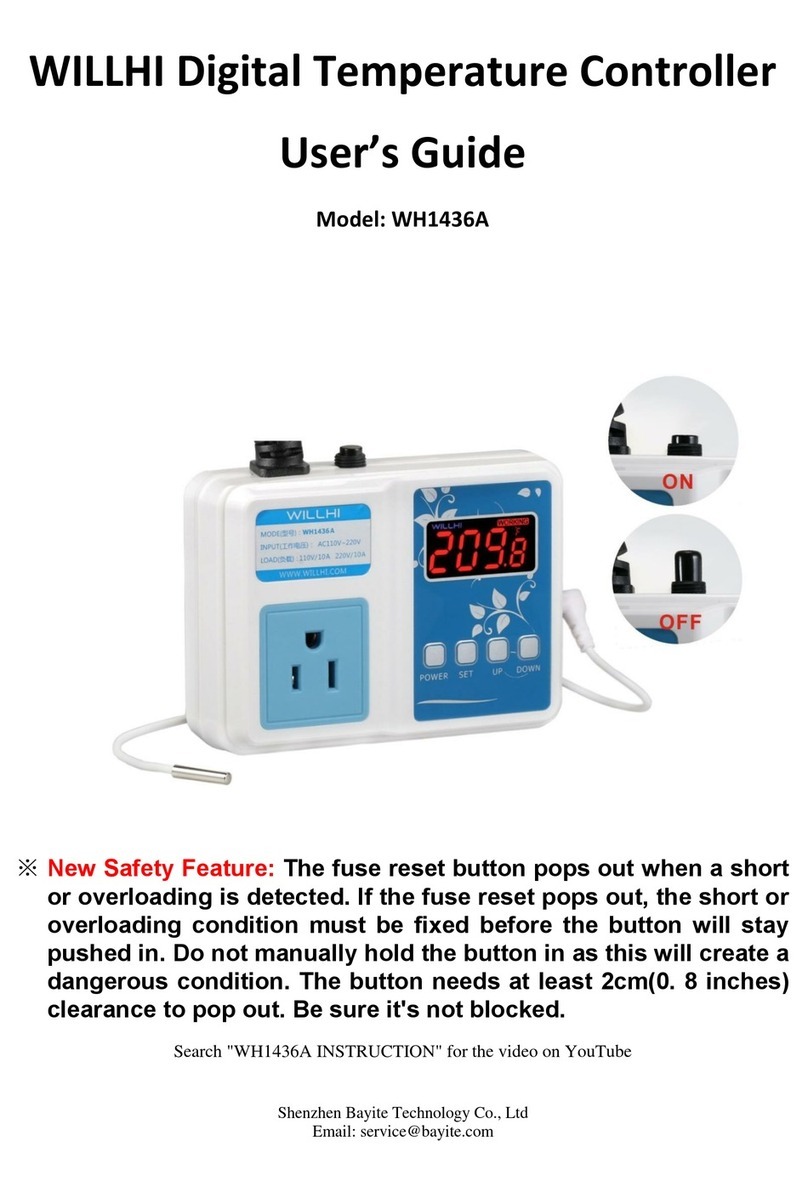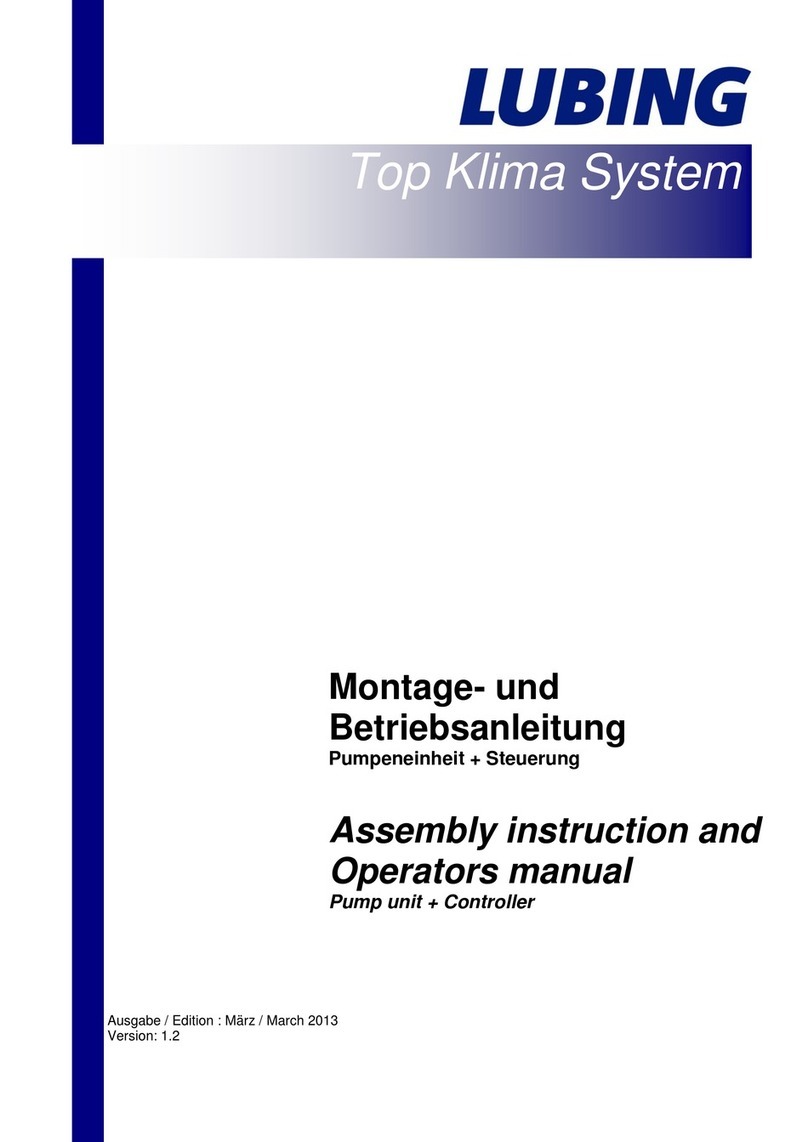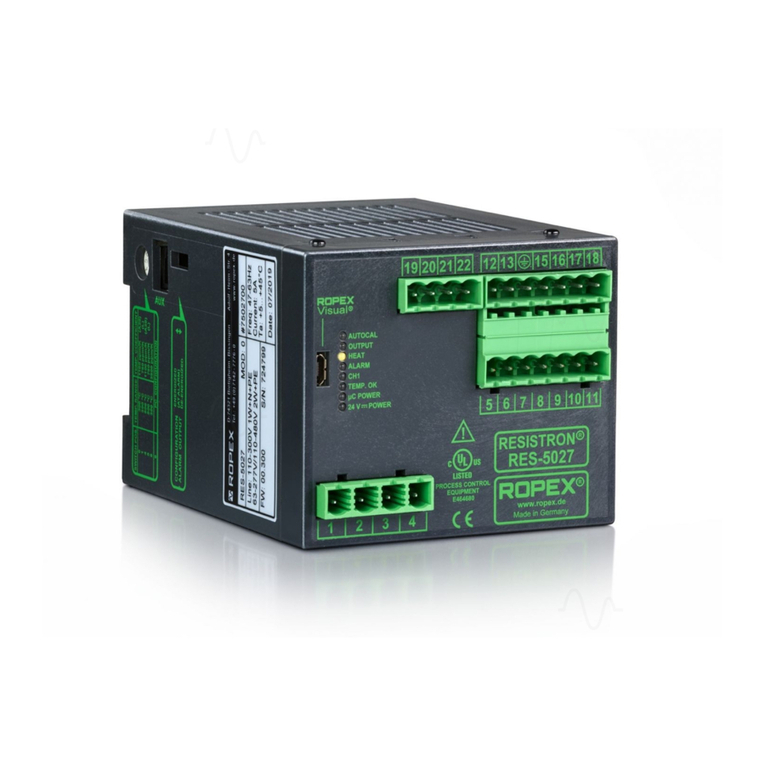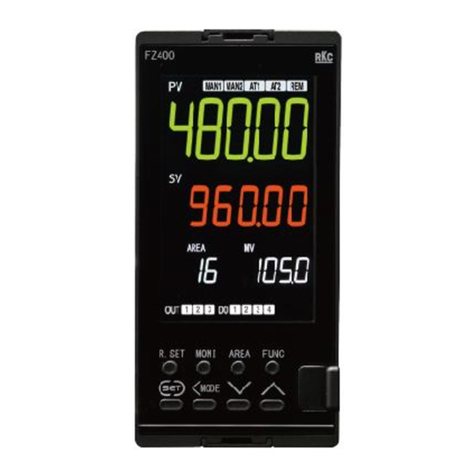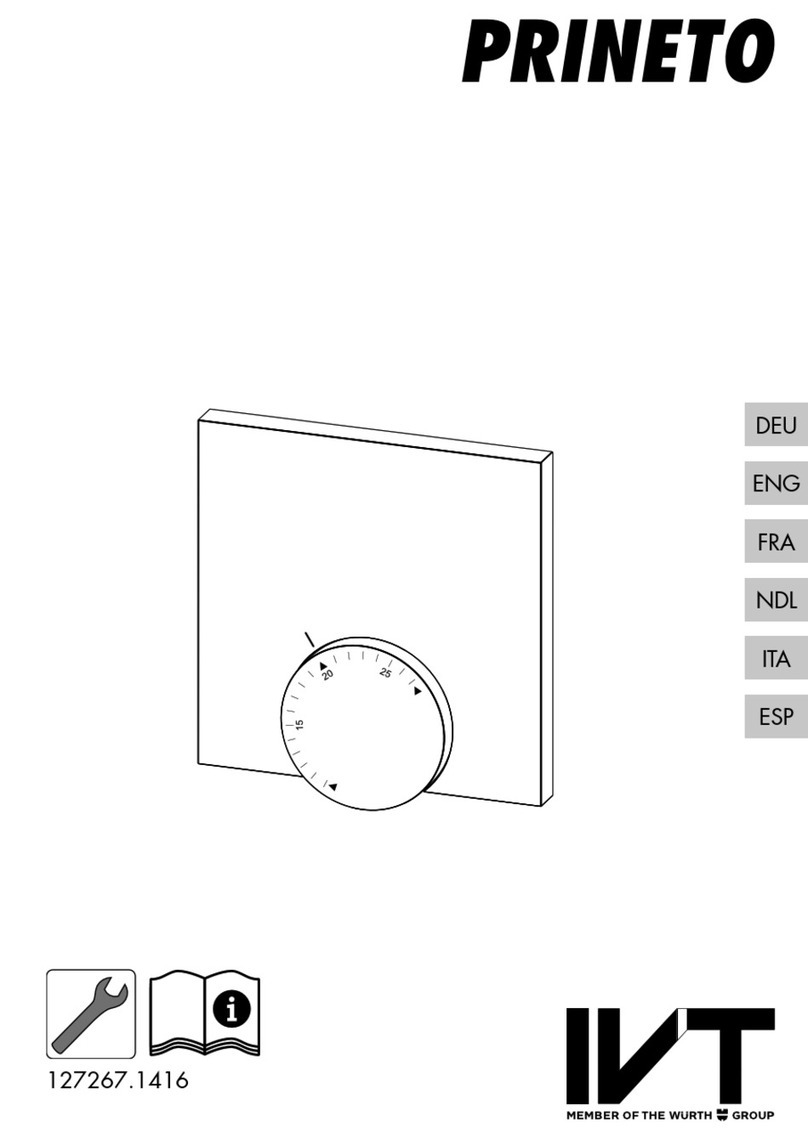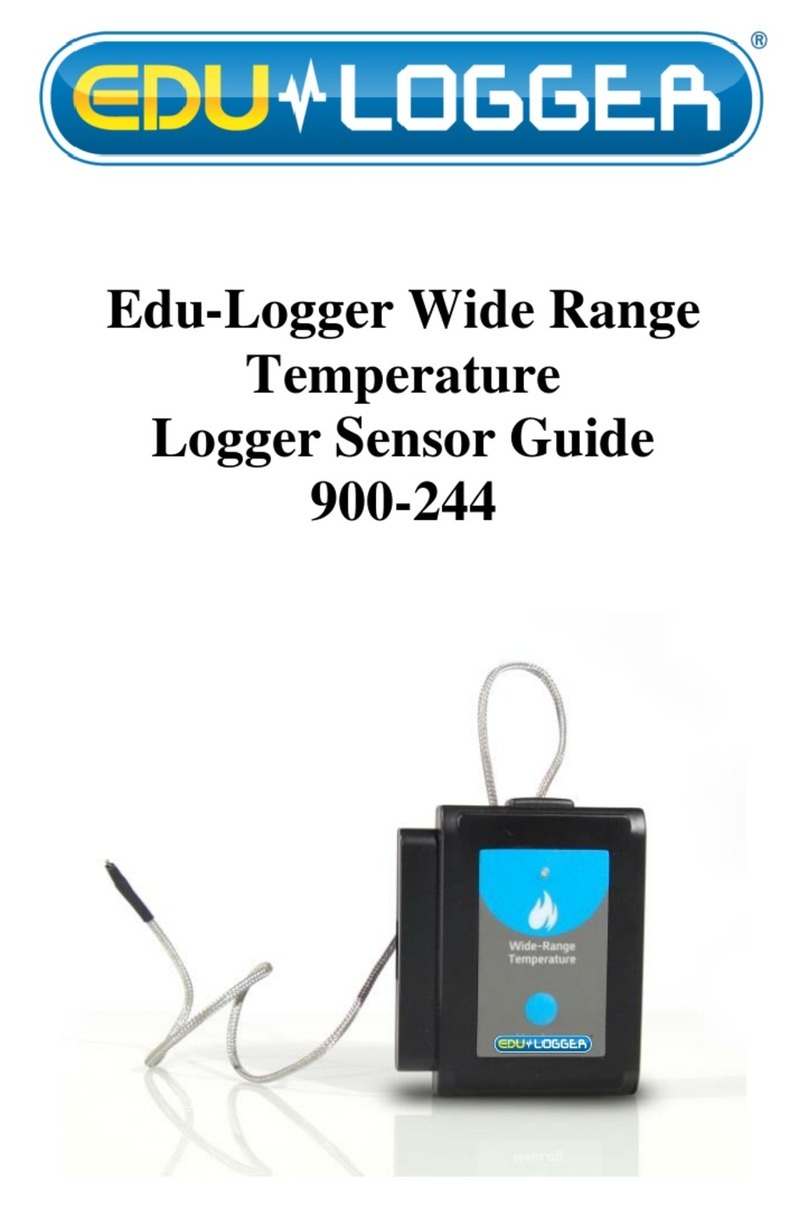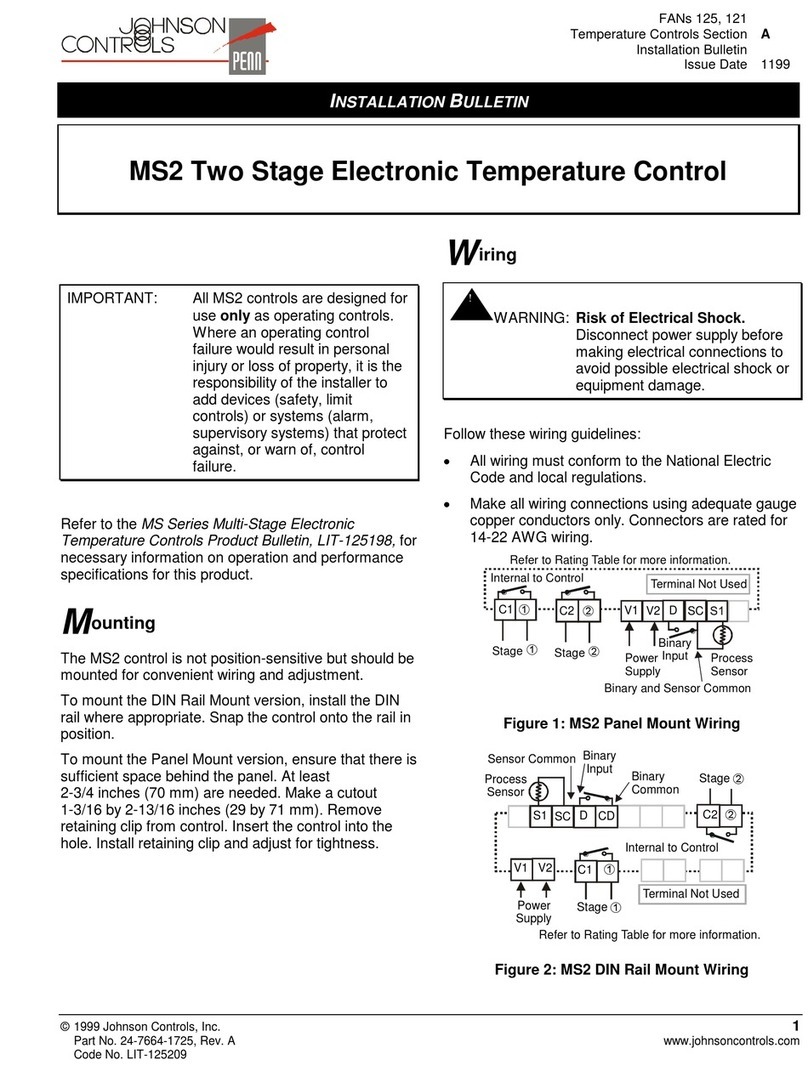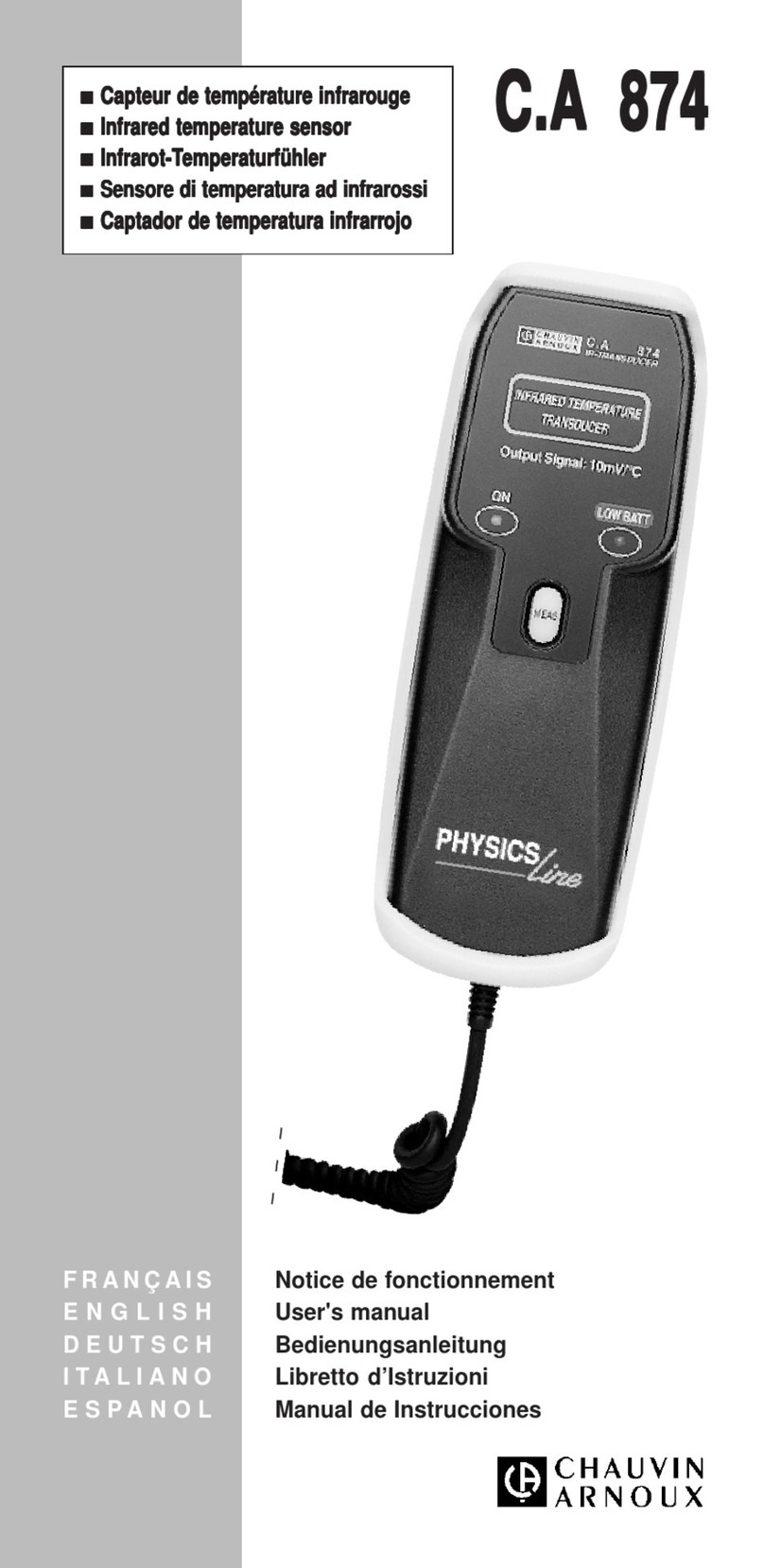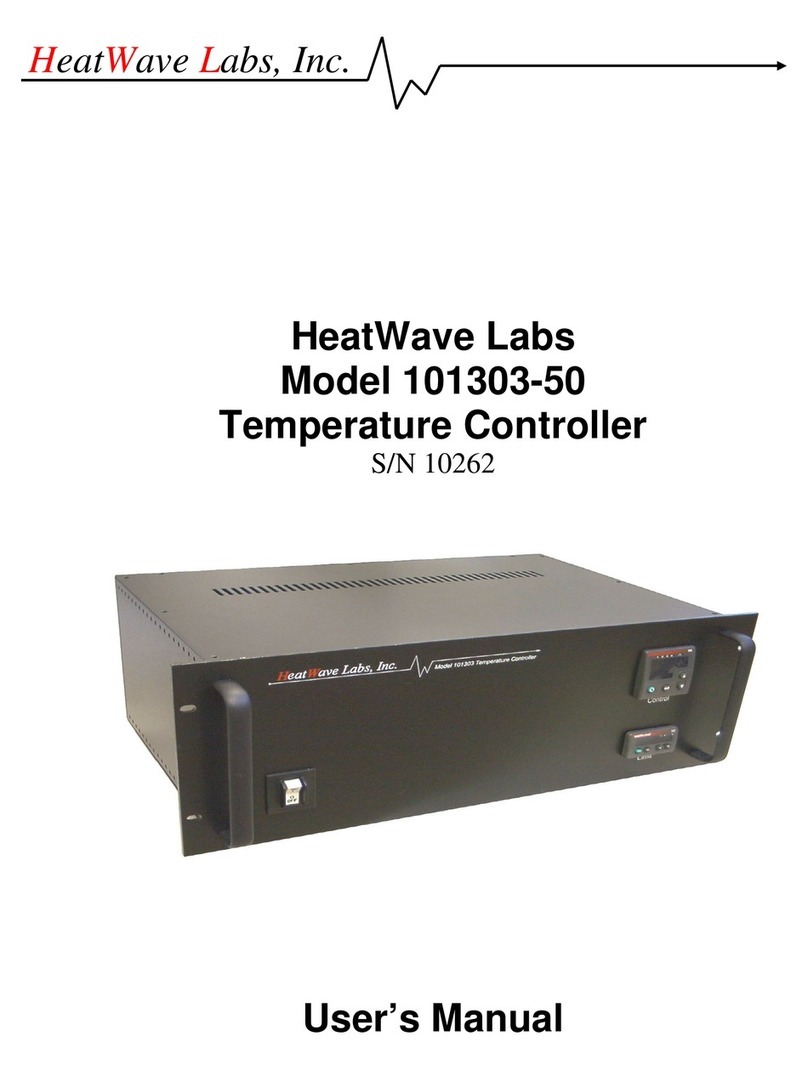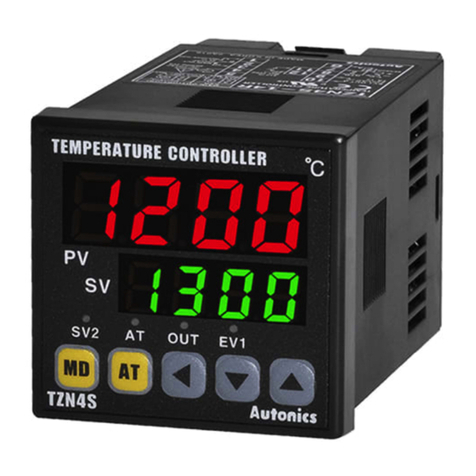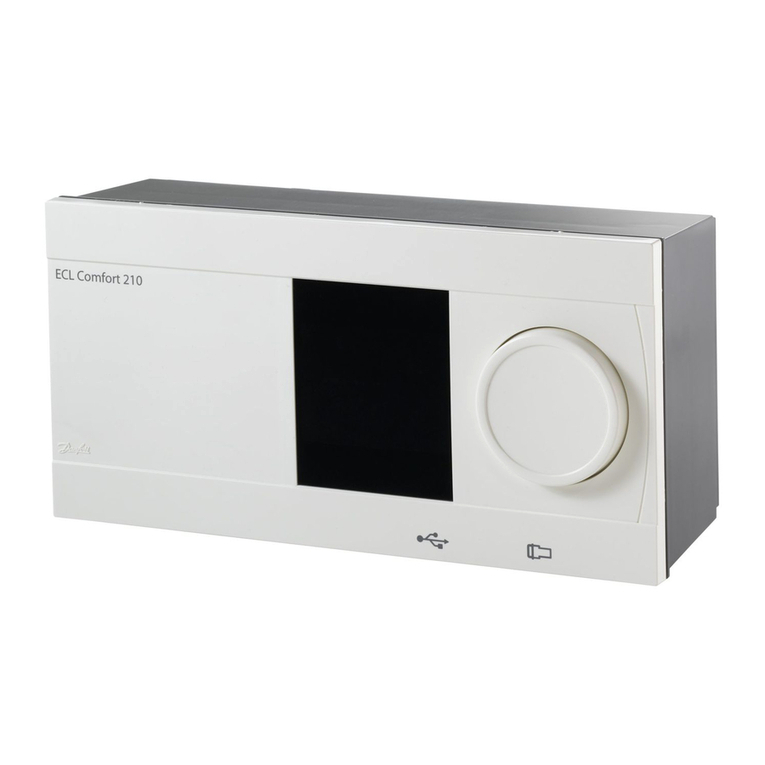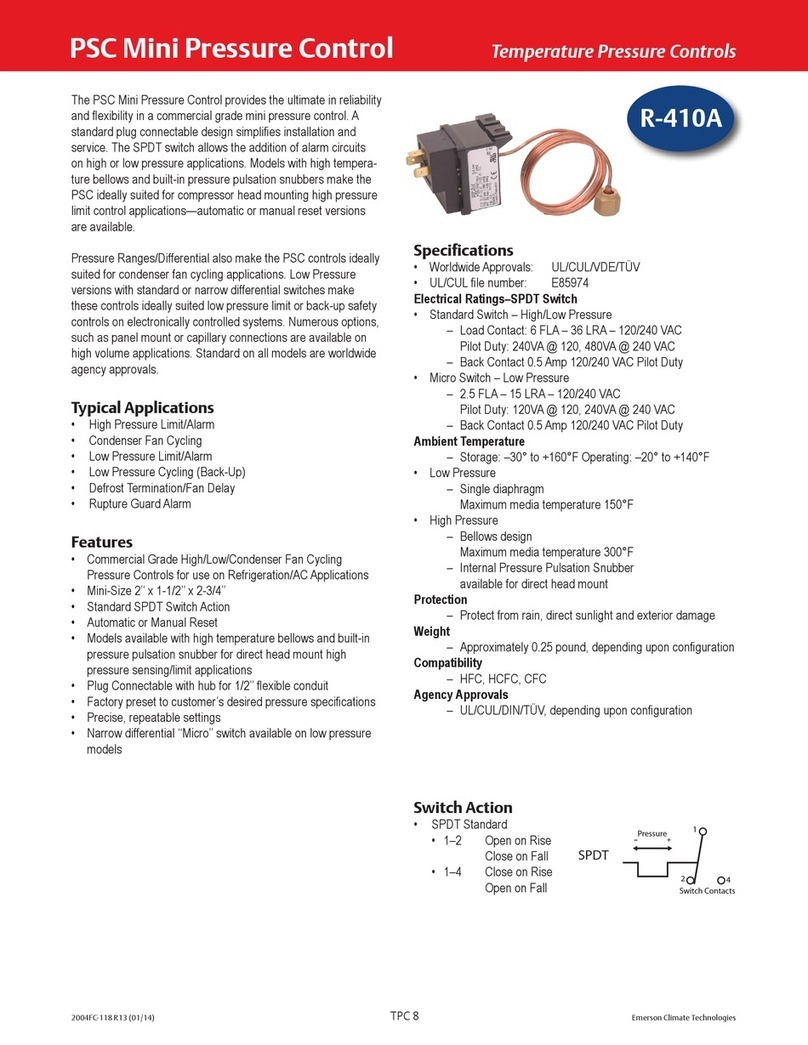
Room Temperature Controller KNX eTR 101 1
Room Temperature Controller KNX eTR 101 • Version: 13.02.2019 • Technical changes and errors excepted. • Elsner Elektronik GmbH • Sohlengrund 16 • 75395 Ostelsheim • Germany • www.elsner-elektronik.de • Technical Service: +49 (0) 7033 / 30945-250
EN
KNX eTR 101
Room Temperature Controller
1. Description
The Room Temperature Controller KNX eTR 101 measures the room tempera-
ture and displays the current value. Via the bus the device can receive an external
measured value and process it with own data to overall temperature value (mixed
value).
The KNX eTR 101 has got an integrated PI controller for a heating and a cooling
system (one or two step). The room temperature is adjusted by means of the + and
- touch buttons.
Functions:
• Measurement of temperature. Mixed value from own measured value and
external values (proportions can be set in percentage), output of minimum
and maximum values
•Display of the actual value or the target value/basic setpoint shift
•2 touch buttons (+/-) vor adjustment of the room temperature
•PI controller for heating (one or two step) and cooling (one or two step)
depending on temperature. Control according to separate target values or
basic target temperature
Configuration is made using the KNX software ETS 5. The product file can be
downloaded from the ETS online catalogue and the Elsner Elektronik website on
www.elsner-elektronik.de in the “Service” menu.
1.0.1. Scope of delivery
• Room temperature controller with mounting
• 4 screw anchors 4 × 20 mm, 4 flat head screws 3 × 25 mm
1.1. Technical specifications
The product conforms with the provisions of EU guidelines.
1.1.1. Accuracy of the measurement
Measurement variations from permanent sources of interference (see chapter Ins-
tallation position) can be corrected in the ETS in order to ensure the specified ac-
curacy of the sensor (offset).
When measuring temperature, the self-heating of the device is compensated.
2. Installation and commissioning
2.1. Installation notes
Installation, testing, operational start-up and troubleshooting should
only be performed by an electrician.
CAUTION!
Live voltage!
There are unprotected live components inside the device.
• National legal regulations are to be followed.
• Ensure that all lines to be assembled are free of voltage and take
precautions against accidental switching on.
• Do not use the device if it is damaged.
• Take the device or system out of service and secure it against
unintentional use, if it can be assumed, that risk-free operation is no
longer guaranteed.
The device is only to be used for its intended purpose. Any improper modification
or failure to follow the operating instructions voids any and all warranty and gua-
rantee claims.
After unpacking the device, check it immediately for possible mechanical damage.
If it has been damaged in transport, inform the supplier immediately.
The device may only be used as a fixed-site installation; that means only when as-
sembled and after conclusion of all installation and operational start-up tasks and
only in the surroundings designated for it.
Elsner Elektronik is not liable for any changes in norms and standards which may
occur after publication of these operating instructions.
2.2. Installation position
The Room Temperature Controller KNX eTR 101 is made for wall mounting.
The device can be mounted directly on plaster or on a socket (Ø 60 mm).
May be installed and operated in dry interior rooms only.
Avoid condensation.
When selecting an installation location, please ensure that the measurement results
are affected as little as possible by external influences. Possible sources of interfe-
rence include:
• Direct sunlight
• Drafts from windows and doors
• Draft from ducts which lead from other rooms or from the outside to the
junction box in which the sensor is mounted
• Warming or cooling of the building structure on which the sensor is mounted,
e.g. due to sunlight, heating or cold water pipes
• Connection lines and ducts which lead from warmer or colder areas to the
sensor
Measurement variations from permanent sources of interference can be corrected
in the ETS in order to ensure the specified accuracy of the sensor (offset).
2.3. Composition of the device
2.4. Mounting
Prepare the device
Remove the front panel from the mounting. Release the lock by moving the front pa-
nel a few millimetres upwards. The two parts can then be easily separated (Fig. 4).
Housing plastic material, glass
Colours similar to RAL 9003 signal white
Mounting on-wall (directly or with a socket Ø60 mm,
resp. cavity wall socket for hole Ø68 mm)
Protection category IP 20
Dimensions housing approx. 81,5 x 81,5 (W x H, mm),
mounting depth approx. 12 mm
Total weight approx. 65 g
Ambient temperature Operation and storage -25…+80°C
Ambient air humidity max. 95% RH, avoid bedewing
Operating voltage KNX bus voltage
Bus current 10 mA at 50% LED brightness,
18 mA at 100% LED brightness
Data output KNX +/- bus terminals
BCU type Own micro controller
PEI type 0
Group addresses max. 254
Allocations max. 254
Communication objects 41
Temperature measure-
ment range
-25…+80°C
Temperature resolution 0.1°C
Temperature accuracy ± 0.6°C (Mind the notes on Accuracy of the
measurement)
Technical specifications and installation instructions
Item n° 70650
13
Fig. 1
Front view
1 Touch area -
2 Temperatur display
3 Touch area +
2
4
5
6
Fig. 2
Back view with mounting
4/5Screw holes for different sockets. Fas-
tening with 2 screws is sufficient. For
wall mounting, use a fixing material
suitable for the ground!
6 KNX bus terminal +/- for connection
when mounted on a socket
7 Spring-loaded terminals KNX bus for
mounting directly on the wall
4
44
55
5
7
Fig. 3
Back view without mounting
6 KNX bus terminal +/- for connection
when mounted on a socket
7 Spring-loaded terminals KNX bus for
mounting directly on the wall
8 Programming button (recessed) for
teaching device
9 Programming LED (recessed)
PRG key and LED are accessible from be-
low/outside when the device is mounted
(see chapter Addressing the device).
6 7 89


